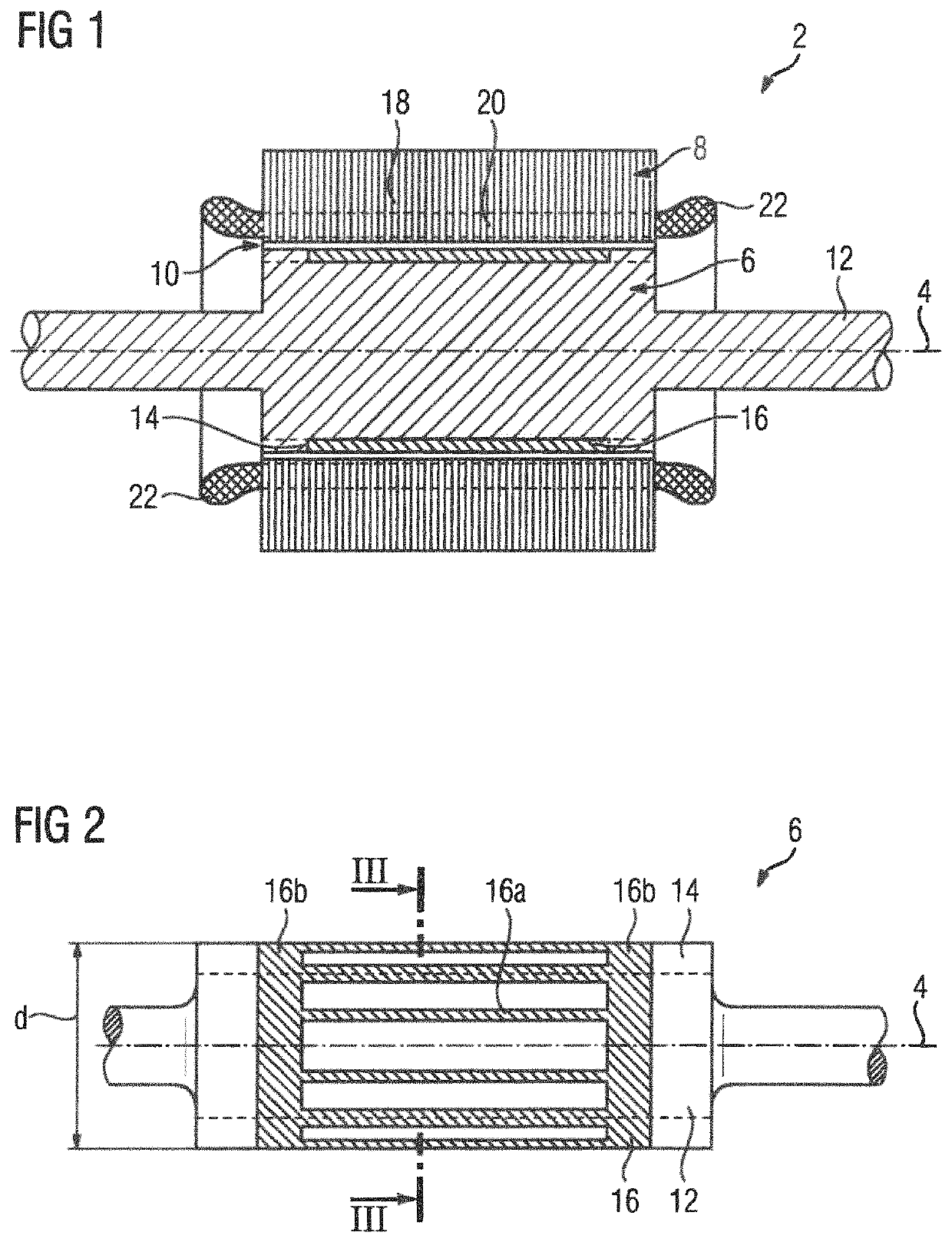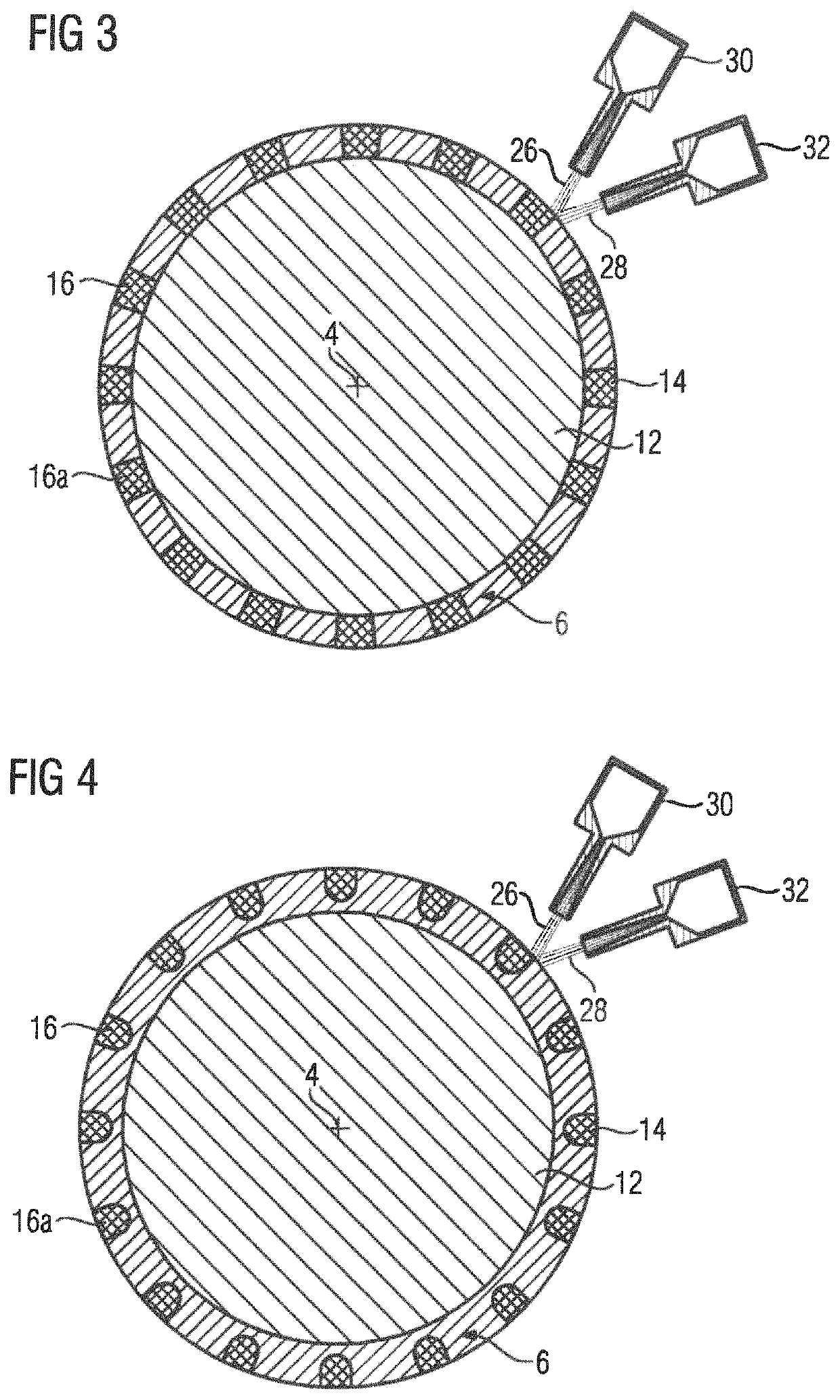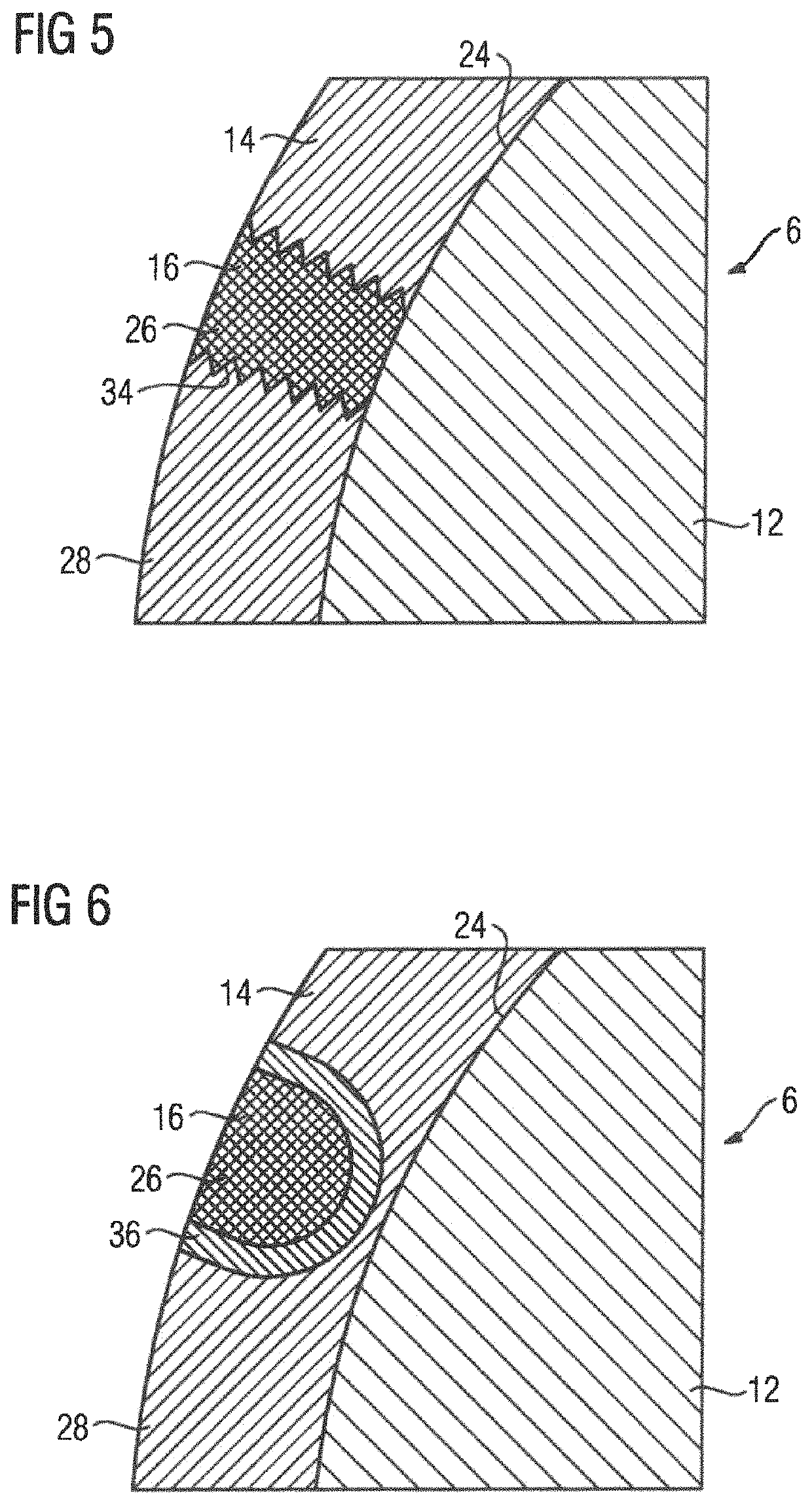Method for producing a rotor for an electric rotating machine
a technology of electric rotating machines and rotors, which is applied in the direction of dynamo-electric machines, magnetic circuit rotating parts, magnetic circuit shapes/forms/construction, etc., can solve the problem of significant restriction of the crystal grain of the conductor
- Summary
- Abstract
- Description
- Claims
- Application Information
AI Technical Summary
Benefits of technology
Problems solved by technology
Method used
Image
Examples
first embodiment
[0043]FIG. 3 shows a cross-section of a rotor 6 with a coating 14. The coating 14 comprises metallic solid body particles, which are sprayed by means of cold gas spraying onto the substantially cylindrical outer surface 24 of the shaft body 12. The coating comprises solid body particles made from a first metallic material 26 and solid body particles made from a second metallic material 28, wherein the first metallic material 26 and the second metallic material 28 are sprayed directly onto the substantially cylindrical outer surface 24 of the shaft body 12 with a first spraying device 28 and a second spraying device 32 in each instance. The squirrel cage 16 is, as in FIG. 2, formed from solid body particles of the first metallic material 28. The second metallic material 28, as in FIG. 2, is a soft-magnetic material, for instance steel, and corresponds substantially to the soft-magnetic material of the shaft body 12. The squirrel cage 16 is embedded completely into the rotor 6. At lea...
second embodiment
[0044]FIG. 4 shows a cross-section of a rotor 6 with a coating 14, wherein at least the short-circuit rods 16a of the squirrel cage 16 have a rounded contour cross-sectionally. By way of example, the contour of the short-circuit rods 16a are shown in a U shape. The squirrel cage 16 is embedded completely into the coating 14 of the rotor 6. The further embodiment of the rotor 6 in FIG. 4 corresponds to that in FIG. 3.
third embodiment
[0045]FIG. 5 shows an enlarged cross-section of a rotor 6 with a coating 14, wherein the first material 26 and the second material 28 are additionally connected in a form fit manner by a, for instance, sawtooth-shaped, rib structure 34. The squirrel cage 16 is embedded completely into the coating 14 of the rotor 6. The further embodiment of the rotor 6 in FIG. 5 corresponds to that in FIG. 3.
PUM
 Login to View More
Login to View More Abstract
Description
Claims
Application Information
 Login to View More
Login to View More - R&D
- Intellectual Property
- Life Sciences
- Materials
- Tech Scout
- Unparalleled Data Quality
- Higher Quality Content
- 60% Fewer Hallucinations
Browse by: Latest US Patents, China's latest patents, Technical Efficacy Thesaurus, Application Domain, Technology Topic, Popular Technical Reports.
© 2025 PatSnap. All rights reserved.Legal|Privacy policy|Modern Slavery Act Transparency Statement|Sitemap|About US| Contact US: help@patsnap.com



